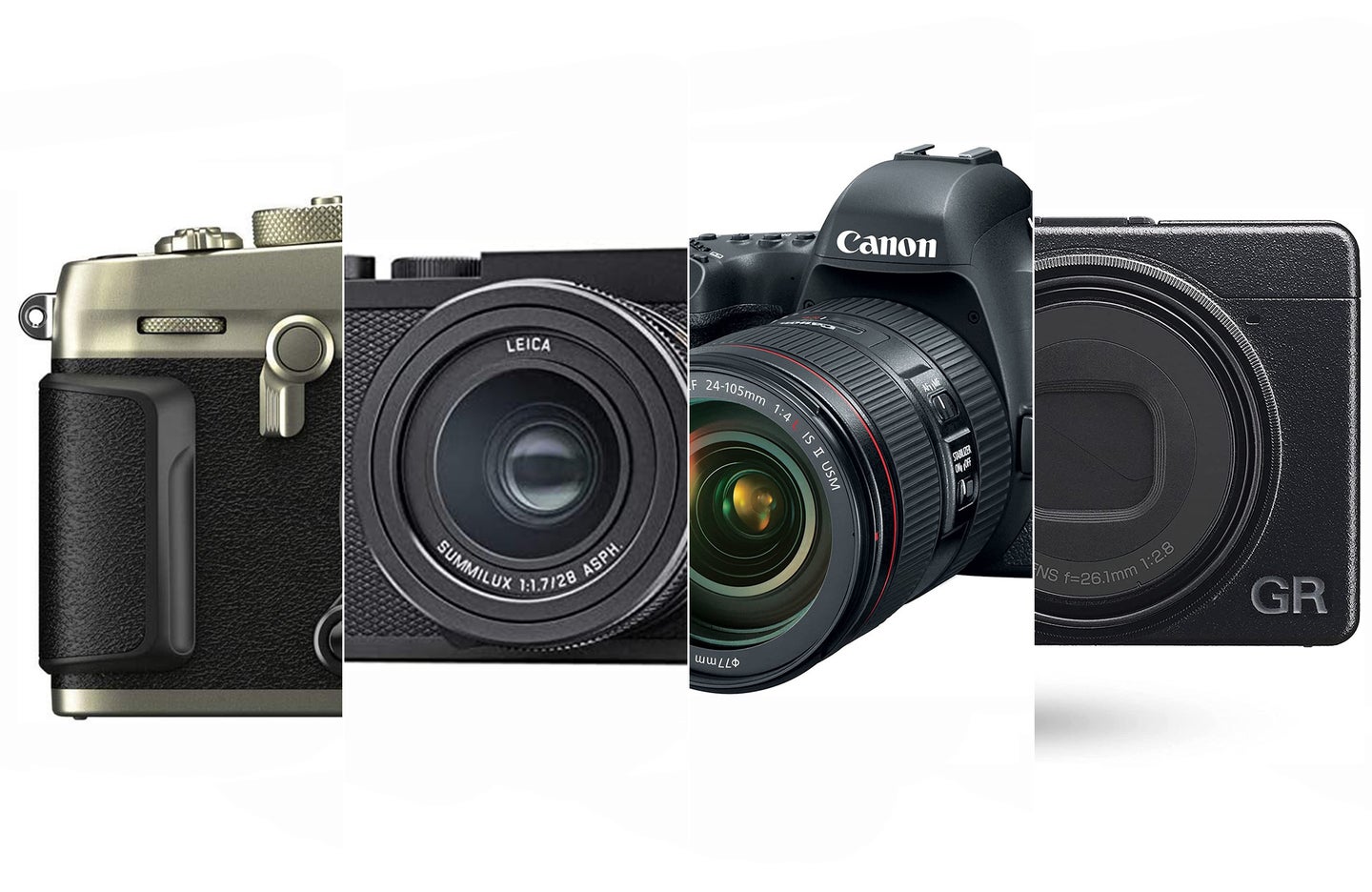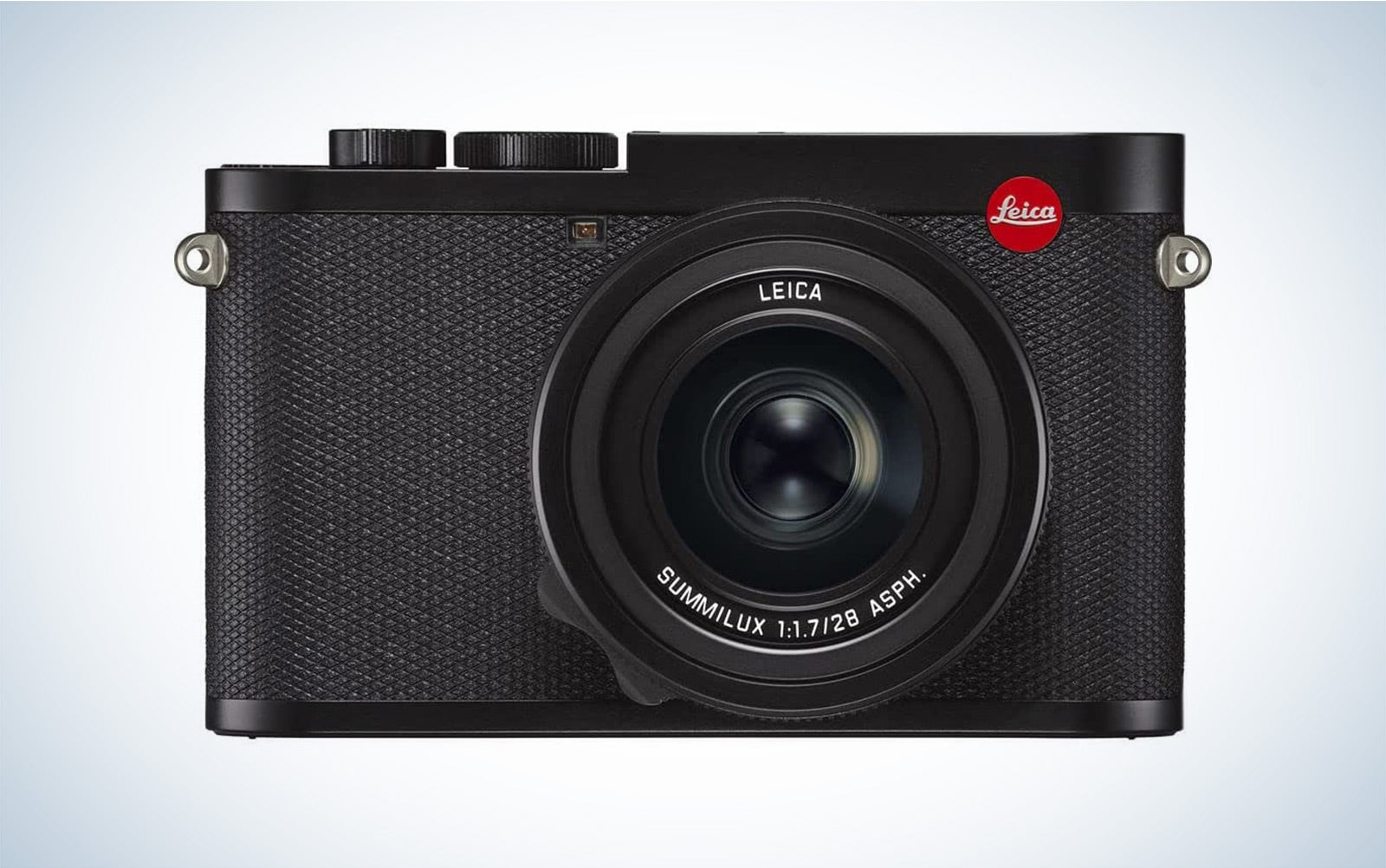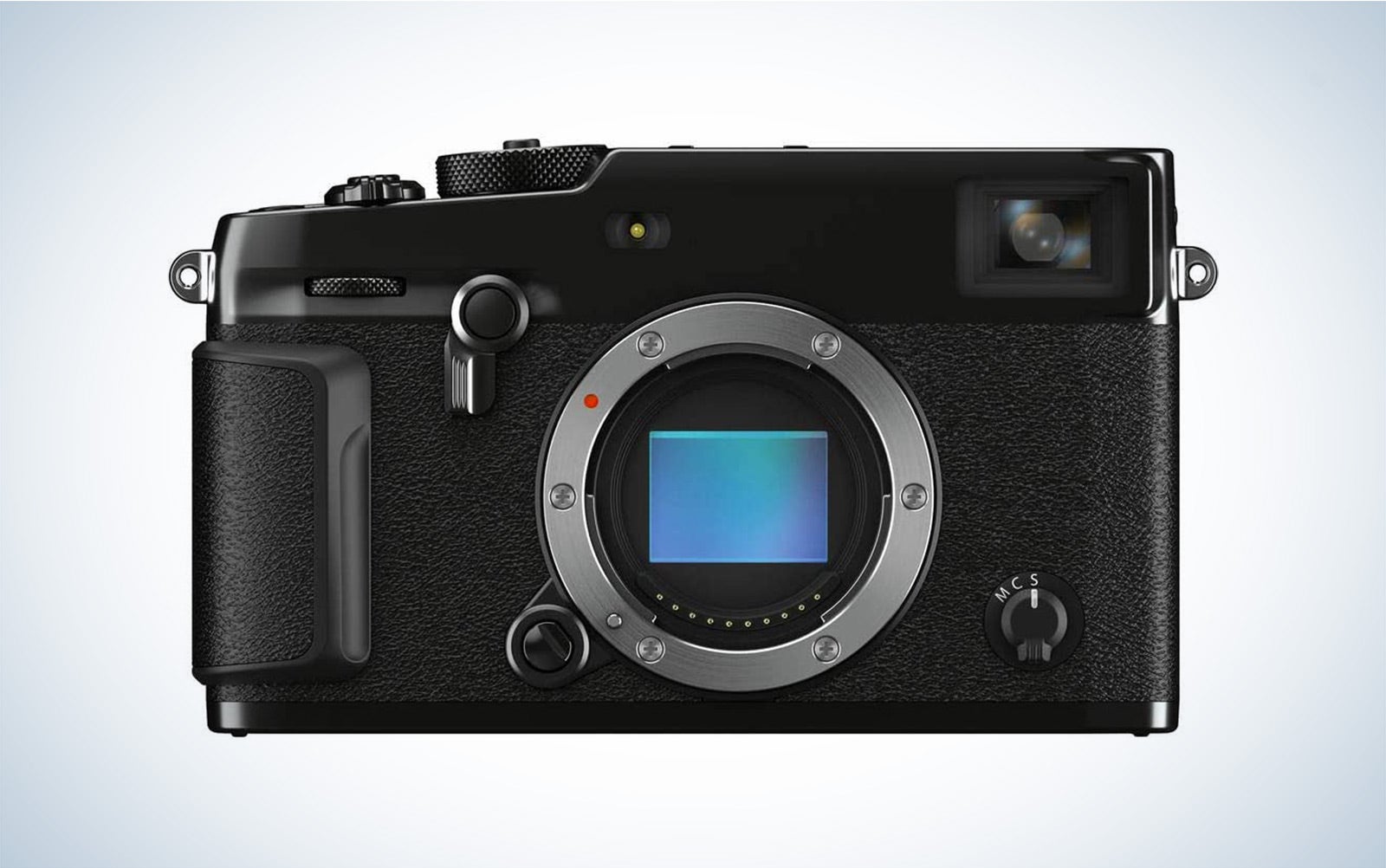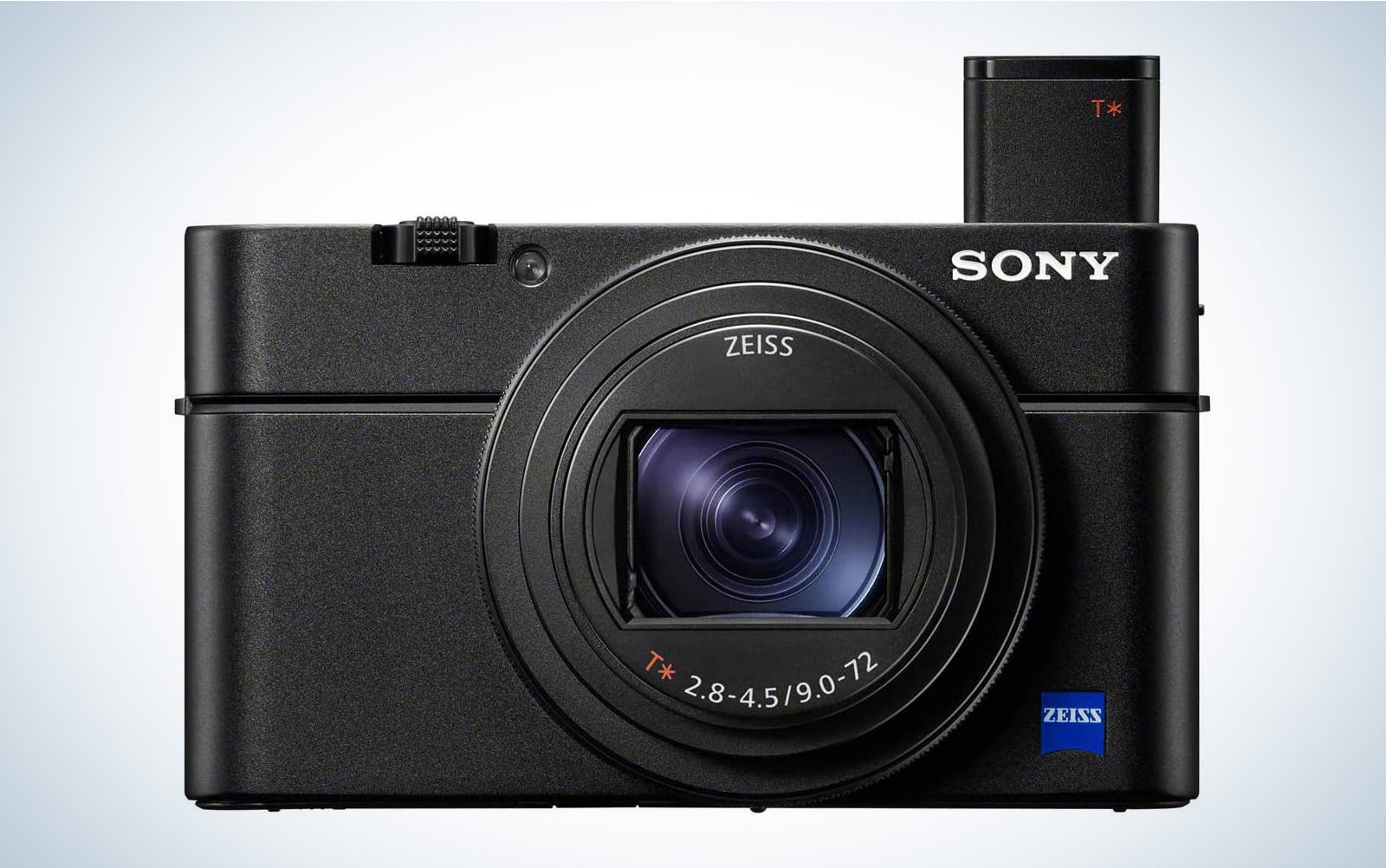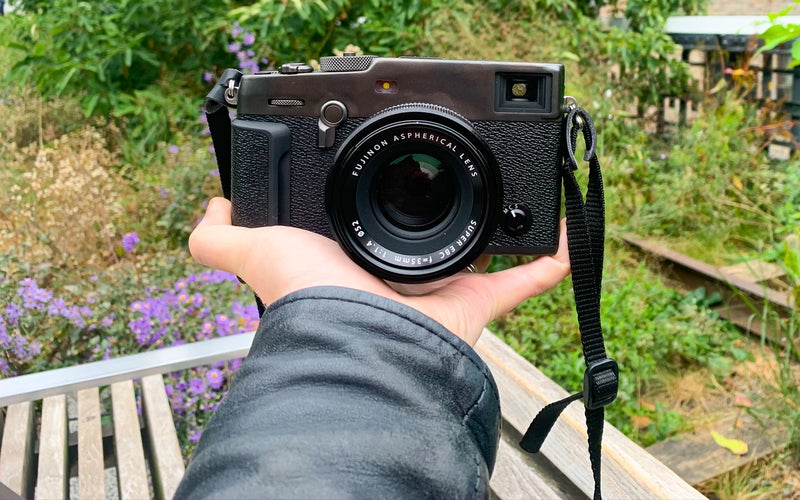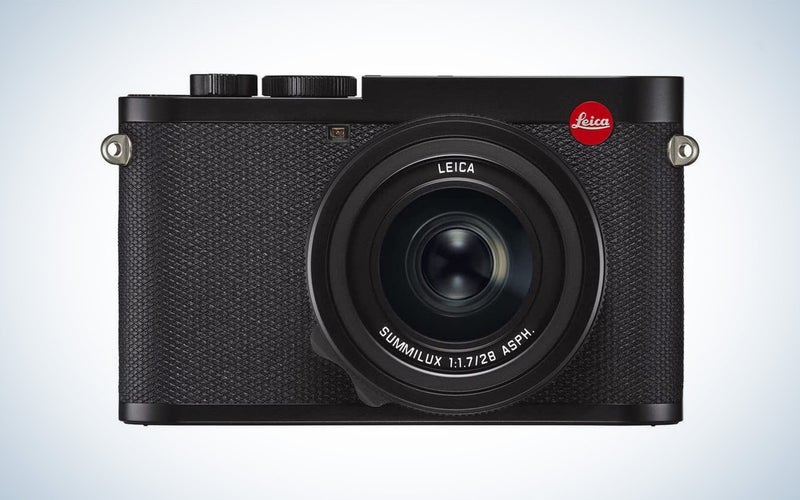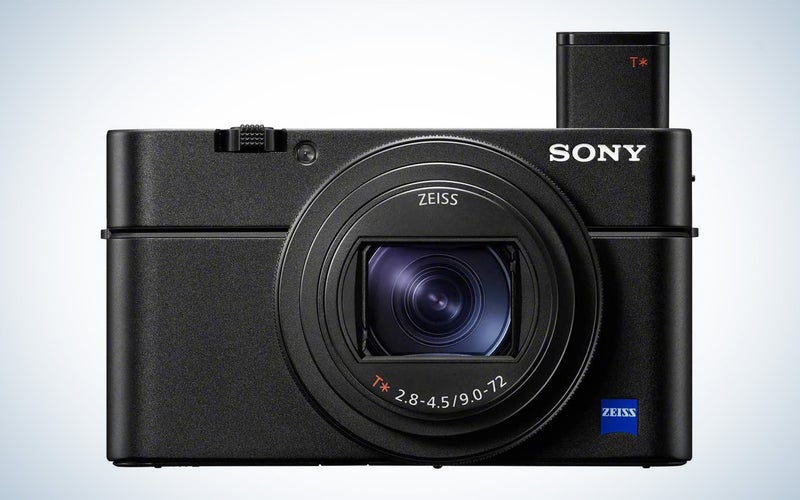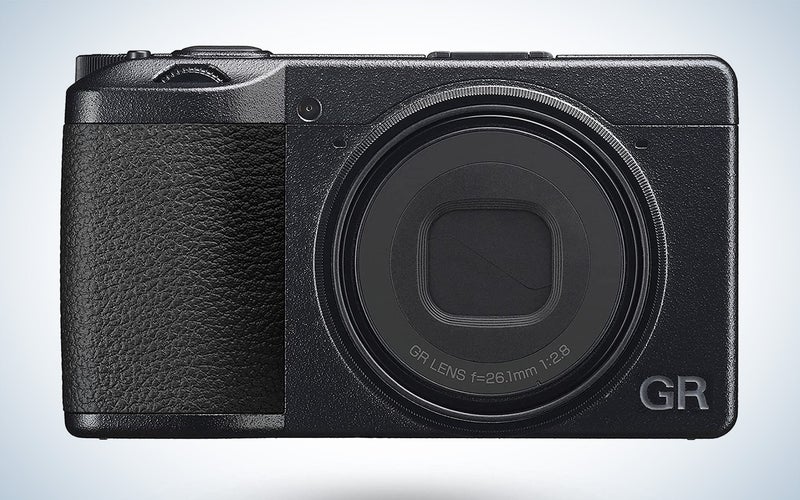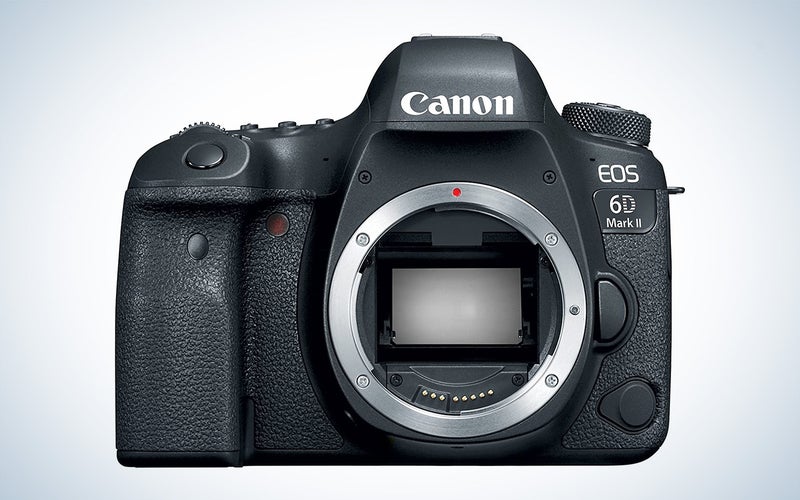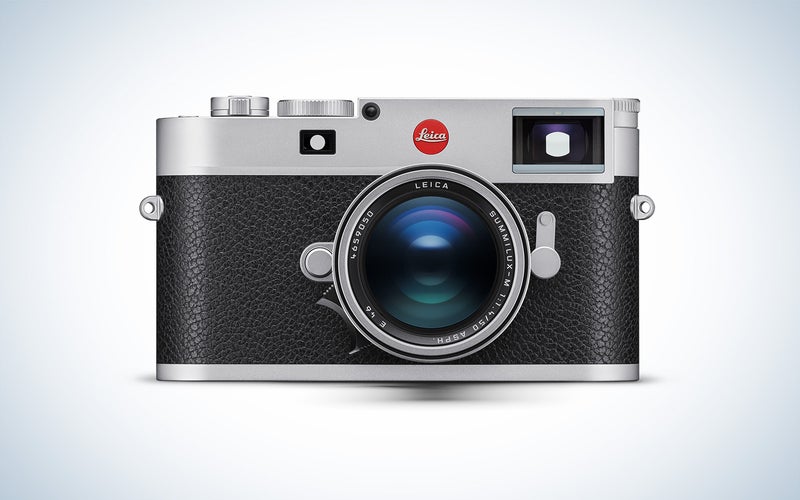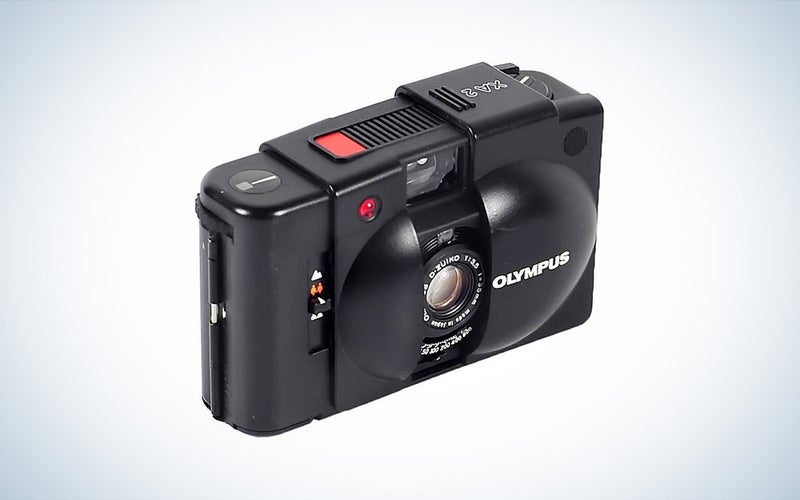We may earn revenue from the products available on this page and participate in affiliate programs. Learn more ›
Street photography is all about thinking on your feet, being discreet, and keeping your eyes open. When it comes to picking the best street photography cameras, you will want something that has quick autofocus, a fast shutter speed, and most importantly, a low profile.
The best street photographers are known for capturing the amusing details of the world around them, so it’s helpful to carry a camera and lens that will draw the least amount of attention—leave the long telephoto at home! The last thing you want to do is alter the scene because a subject realizes you are out there shooting. You’ll also want to look for something lightweight. A big part of street photography is standing around and waiting for those special moments to happen, and you don’t want to wreck your shoulders in the process.
- Best overall: Fujifilm XPro3
- Best upgrade compact: Leica Q2
- Best compact: Sony RX100 VII
- Best fixed-lens digital compact: Ricoh GR IIIx
- Best DSLR: Canon EOS 6D Mark II
- Best rangefinder: Leica M11
- Best budget film compact: Olympus XA2
How we picked the best street photography cameras
When selecting the products featured in this guide, we considered features like autofocus capabilities, camera body design, image quality, and of course, price.
Although any camera can technically be used for street photography, in our experience it’s best to have something with an understated profile that will allow the photographer to blend into the crowd and capture the world as it goes by. It’s a major reason why most of the picks are mirrorless cameras or high-end compacts. We also wanted to represent products that could fit into any photographer’s budget, from the high-end Leica Q2 to the affordable Fujifilm XA-7.
The final consideration when writing this guide on the best street photography cameras was picking products that we’ve actually used in the field. Each of the cameras that are featured in this buying guide are ones we have tested over the years, used on jobs, or spent an afternoon demoing in the field.
The best street photography cameras: Reviews & Recmomendations
Best overall: Fujifilm XPro3
Jeanette D. Moses
Why it made the cut: The XPro3 is a digital, mirrorless camera with an analog vibe. The hidden LCD touchscreen allows the photographer to focus on composing through the camera’s viewfinder. It might feel antiquated, but it doesn’t get better than this for a focused street shooter.
Specs:
- 26.1 MP sensor
- Hybrid 0.5x OVF, 3.69M-dot OLED EVF
- Hidden tilting touchsceen
Pros
- Same tech specs as the X-T3
- Hidden touchscreen
- Attractive built-in film presets
- 4K video capabilities
Cons
The Fujifilm XPro3 was designed to appeal to street photographers making it our choice for the best street photography camera overall. The hidden flip-down touchscreen is inherently divisive. But, if you are the kind of shooter who loves to keep your eye to the viewfinder, this is the camera for you. It’s one of the few digital cameras on the market that requires you to think like a film shooter. It also has mega-style points.
The XPro3 has titanium top and bottom plates and tactile accents reminiscent of a film camera. The film-stock monitor is also undeniably cool. In addition, the unique viewfinder gives you the ability to see outside of the frame, an excellent tool for planning when to hit the shutter while keeping an eye on the action around you.
When paired with a prime lens, this mirrorless option is quite compact. It can convert RAW files to TIFFs in-camera, and most importantly, is a joy to shoot with. Of course, the XPro3 isn’t going to be the best camera for every genre of photography, but for street photography, we think it’s perfect.
Best upgrade compact: Leica Q2
Leica
Why it made the cut: The Leica Q2 is a well-built mirrorless fixed-lens camera, capable of creating beautiful RAW photos at ISO as low as 50, thanks to the 47 MP sensor. Although it’s undoubtedly pricy, this camera is highly capable. It feels good in your hands, and it’s undeniable that Leica has long been a favorite of street photographers.
Specs:
- 47 MP sensor
- 28mm fixed lens
- Fixed 3” LCD screen
Pros
- Weather sealed body
- Shoots beautiful RAW photos
- Fast, fixed F/1.7 lens
Cons
- Expensive
The Leica Q2 is a full-frame camera with a 28mm fixed lens built around a 47.3 megapixel sensor. It has a similar look and feel as Leica’s M rangefinder cameras. In addition, it can shoot 4K UHD video, has a dust and water-resistant build, and features Bluetooth for easier image sharing on the fly.
The ISO range is 50-50,000 (thanks to that massive sensor), and it has a beautiful EVF that makes this ideal for street shooting. The Q2 is a brilliant camera and a worthy investment for any street photographer if your budget allows it.
Best compact: Sony RX100 VII
Sony
Why it made the cut: The ultra-compact Sony RX100 is on its 7th iteration, and every version just keeps getting better. Built around a 20 MP 1” sensor with an impressive 24-200mm lens, the RX100 features a ton of manual controls typically found in larger mirrorless cameras. This is one powerful pocket-sized camera.
Specs:
- 24-200mm lens
- 20 MP 1” sensor
- 3” tilting LCD screen
Pros
- Pocket sized compact
- Pop-up OLED viewfinder
- Built-in mic input for video
Cons
- Not great in low light
- No mic mount
The Sony RX100 VII is one of the most capable compact cameras on the market. It has excellent autofocus, a lens with an impressive zoom range, and tons of customizable options. This gives users way more control than a typical compact camera. In addition, since it’s so small, it’s easy to take anywhere and remain inconspicuous, an important thing to consider when shopping for a street photography camera.
The clever pop-up viewfinder lets you compose images with your eye to the camera, a rare luxury in the world of compact cameras. It also features Sony’s impressive real-time tracking tech, which is excellent for holding focus on your subjects as they walk through the streets. Although its low-light capabilities are limited, this is a great pocket-sized companion for shooting during the daytime.
Best fixed-lens digital compact: Ricoh GR IIIx
Ricoh
Why it made the cut: Based on a classic film camera, this fixed-lens compact has a super-sharp lens and a very inconspicuous body.
Specs:
- 40mm fixed lens
- Compact body
- 24.2-megapixel APS-C sensor
Pros
- Large sensor inside makes for excellent image quality
- Sharp, versatile 40mm lens
- Extremely pocket-friendly
Cons:
- No zoom
- Just OK autofocus
The original Ricoh GR film cameras attained cult status in the film photography world for their small, inconspicuous bodies and their extremely sharp lenses. The GR IIIx follows in that tradition. Instead of the typical 28mm lens you’d expect from previous models, it employs a more versatile 40mm lens, which makes it more capable when it comes to tighter portraits or detail shots where you want to keep the focus on a single subject. Its APS-C sensor allows it to pull of some actual shallow depth of field. It’s something you’ll want to use relatively sparingly in street photography where you typically want to keep most of the scene in focus, but it’s great to have as an option. Its magnesium alloy body makes it tough enough that it can survive while shoved in a pocket or a bag as an everyday carry. It looks and feels like the original and that’s a great thing in this instance.
Best DSLR: Canon EOS 6D Mark II
Canon
Why it made the cut: This entry-level DSLR has a relatively lightweight body while still offering a full-frame 26 MP CMOS sensor. It has responsive autofocus, an optical viewfinder with 45-point all-cross-type AF options, and can shoot up to 6.5 fps.
Specs:
- 26 MP CMOS sensor
- Mid-size DSLR
- 3” full-articulating LCD screen
Pros
- Large, bright LCD screen
- Compact size
- Good autofocus
Cons
- No viewfinder
Although it’s not the most exciting camera on the list, the Canon EOS 6D Mark II is a highly capable DSLR with a reasonable price tag compared to higher-end full-frame DSLRs.
Its image quality is impeccable, and it’s a more versatile option than some of the other options on this list. Although we wouldn’t typically recommend a DSLR for street shooting, the 6D has a small enough profile when paired with a nice pancake lens or a nifty-fifty to make it suitable for the genre.
This well-built choice is easy to use and has an impressive autofocus system for nailing your shots.
Best rangefinder: Leica M11
Leica
Why it made the cut: Leica hasn’t done much to change the M-series design since it debuted back in the ’50s, which is a good thing. It’s quiet, inconspicuous, and produces absurdly beautiful photos.
Specs:
- 60-megapixel sensor
- Rangefinder
- Uses M-mount lenses
Pros
- Cool triple resolution sensor lets shooter prioritize resolution or dynamic range
- Perfect handling as with most Leica M cameras
- Sturdy build
- Uses iconic M-mount lenses
Cons
- Extremely pricy
- No autofocus
If you want to shoot like a classic street photographer, you can’t go wrong with a Leica M-series rangefinder. The new M11 has decidedly modern guts that can churn out 60-megapixel raw files in the easy-to-edit DNG format. The new M11, however, also offers 33- and 18-megapixel settings that still use the whole sensor and emphasize dynamic range over pure resolution. Even with the fancy electronics inside, the M11 stays true to the M legacy which started back in the 1950s. The M11 looks like the rangefinders that came before it and handles like one, too. The shutter is nearly silent and the manual focus lenses allow for zone focusing, which is as pure as it gets when it comes to shooting on the streets. Of course, you’ll need to set aside some considerable cash to get one, and even then, you’ll still need room in the budget for a lens. But, if you’ve recently sold some NFTs of hipster cats or whatever and you’re flush with cash, this camera is hard to beat. – Stan Horaczek
Best budget film compact: Olympus XA2
Olympus
Why it made the cut: This manual-focusing film camera costs considerably less than some of its AF competition. Plus, it’s tiny, inconspicuous, and produces truly impressive image quality.
Specs:
- 35mm film
- Manual focus
- Attached 35mm f/3.5 lens
Pros
- Tiny enough to fit in a pocket
- Very sharp lens
- Sliding design protects the lens
- Mostly mechanical
Cons
- No autofocus
- Can be tough on big hands
- Flash is an external add-on
At first glance, the XA2 almost looks like a toy camera. In reality, it’s an impressive little camera with surprising street photography. chops. It doesn’t autofocus, but it does have an easy-to-use zone focusing scale, which allows for easy shooting from the hip. Rather than relying on the camera’s AF sensor to find and focus on the subject, you simple set the focus distance and get your subject to fall into that range. It’s an old school technique that’s fun and satisfying when you nail it. It has a tiny optical viewfinder and a 35mm f/3.5 lens that’s extremely sharp when you nail the focus. The flash comes as an additional component that attaches to the side of the camera rather than the top. This is a true classic and it will only set you back a fraction of the price when compared to trendier and more popular models like the Olympus Stylus Epic (MJU II) or the astronomically priced Contax T2. – Stan Horaczek
Things to consider when looking for the best street photography cameras
When shooting out on the street, it’s important to be quick. Street photography is about capturing those fleeting moments in life, so you will want a camera with speedy autofocus and a fast shutter speed. Intuitive controls for switching settings without having to remove your eye from the camera’s viewfinder are also very important. A camera with a fast burst mode can be useful if you are just starting with street photography. The best street photography cameras will allow you to capture multiple images from the same scene, giving you the opportunity to choose your best shot during the editing process.
Although we live in an era where everyone has a camera in their pocket, and it’s not unusual to see people whip out their smartphones and snap a picture, a true street photographer does their best work by being discreet. A lightweight camera will allow you to blend in without being noticed. Plus, it will keep your shoulders from aching after a long day of shooting. So look for something with a low-profile body and short lens. For this reason, mirrorless cameras or high-end compacts can be great options for street photographers.
A mid-range lens will serve you well for shooting street photography. While 35mm is considered the classic for street photographers, something slightly wider or tighter can provide a unique perspective for this shooting style. Ideally, though, you want to stay within the 24mm-50mm range. Many street photographers love a fixed lens for this genre. It keeps them focused on composing and forces them to zoom with their feet. Generally speaking, a fixed focal length will also have a wider aperture range, allowing you to shoot fast, even in darker lighting conditions.
FAQs
Q: How do you carry a camera for street photography?
When capturing moments on the streets, the most important thing is to keep your camera close so you are ready to capture a picture at a moment’s notice. Different carrying styles work for different shooters, but the most common ways you will see a street photographer carry their camera is with a camera strap wrapped around their wrist or slung across their body and hanging at the hip.
Q: What are the best camera settings for street photography?
Street photography is all about being quick. For this reason, the most important thing is to keep your shutter speed fast. Subject tracking can also be incredibly beneficial. If it’s late at night or a darker day, keep your aperture wide so you can let in plenty of light. On the flip side, if you are shooting during the day, a setting of f/5.6-f/8 will help you keep more things in focus in the frame.
Q: What point-and-shoot camera does a professional photographer use?
Professionals are used to having lots of control when they shoot, and so if they are using a point-and-shoot, they tend to look for something that gives them those options. Generally, a professional photographer will want a camera that allows them to put it in manual mode so they can control things like shutter speed, aperture, and ISO. Luckily, there are many high-end compacts that offer these advanced features.
Final thoughts on the best street photography cameras
When selecting the best street photography cameras, it’s important to consider things like weight and autofocus capabilities. Ultimately you want to go with something that you can use discreetly and intuitively, but also something that is fun to work with. Street photography is all about seeing the world and you want a camera that will help you do that by acting as an extension of your eyes. The cameras in this guide certainly do just that.
